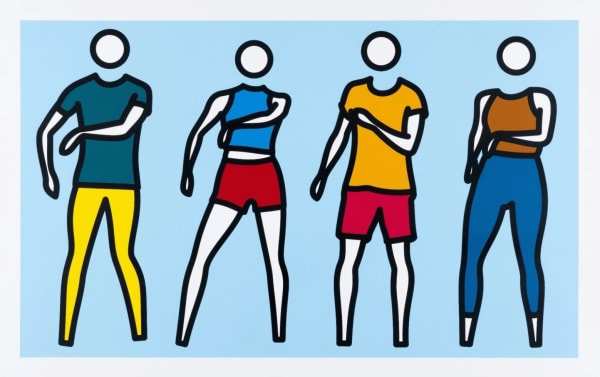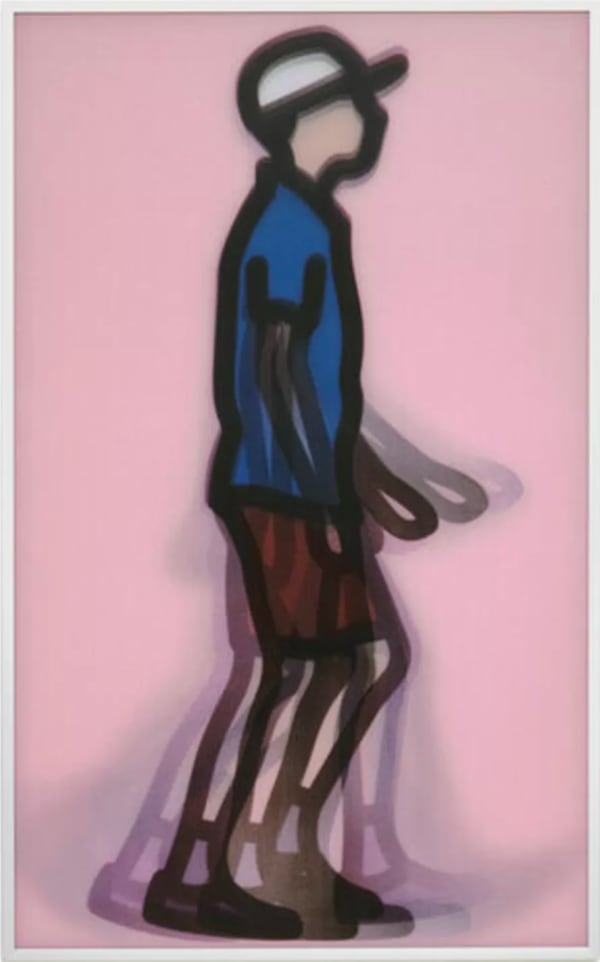Julian Opie’s visual language sits at the crossroads of Pop Art and Minimalism, merging the cultural immediacy of everyday imagery with a disciplined pursuit of reduction and clarity. Drawing from Warhol’s democratization of the visual and Lichtenstein’s graphic precision, Opie transforms the familiar signs of modern life - pedestrian icons, digital avatars, street signage - into a universal vocabulary. His flattened figures, bold contours, and distilled landscapes echo the visual architecture of contemporary cities, while simultaneously paying homage to the Pop artists who first elevated commercial imagery into the realm of fine art. Opie takes their ethos further by embracing the global pictographic language that now governs how we navigate the world.
Minimalism gives Opie his structure: an economy of form, clean repetition, and the belief that truth can emerge through reduction. His work channels the calm geometry of Ellsworth Kelly, the systematic logic of Donald Judd, and the meditative clarity of Agnes Martin - all translated into a distinctly contemporary register. The result is a body of work in which “less is more” becomes an entire universe: instantly recognizable, emotionally resonant, and uncannily suited to our screen-based age. In simplifying the world to its essential forms, Opie reveals a visual system that mirrors how we communicate today - through icons, symbols, movement, and the universal language of design.
-
-
 Julian OpieDance Synched 1, 2024
Julian OpieDance Synched 1, 2024 -
 Julian OpieDance Synched 2, 2024
Julian OpieDance Synched 2, 2024 -
 Julian OpieDance Synched 5, 2024
Julian OpieDance Synched 5, 2024 -
 Julian OpieNew York Couple 3, 2019
Julian OpieNew York Couple 3, 2019 -
 Julian OpieNew York Couple 6, 2019
Julian OpieNew York Couple 6, 2019 -
 Julian OpieRuth With Cigarette 2, 2005-2006
Julian OpieRuth With Cigarette 2, 2005-2006 -
 Julian OpieStanding Couples 2, 2024
Julian OpieStanding Couples 2, 2024 -
 Julian OpieStanding Couples 6, 2024
Julian OpieStanding Couples 6, 2024 -
 Julian OpieSuzanne (front) 8, 2006
Julian OpieSuzanne (front) 8, 2006 -
 Julian OpieKeyush, 2025
Julian OpieKeyush, 2025
-









